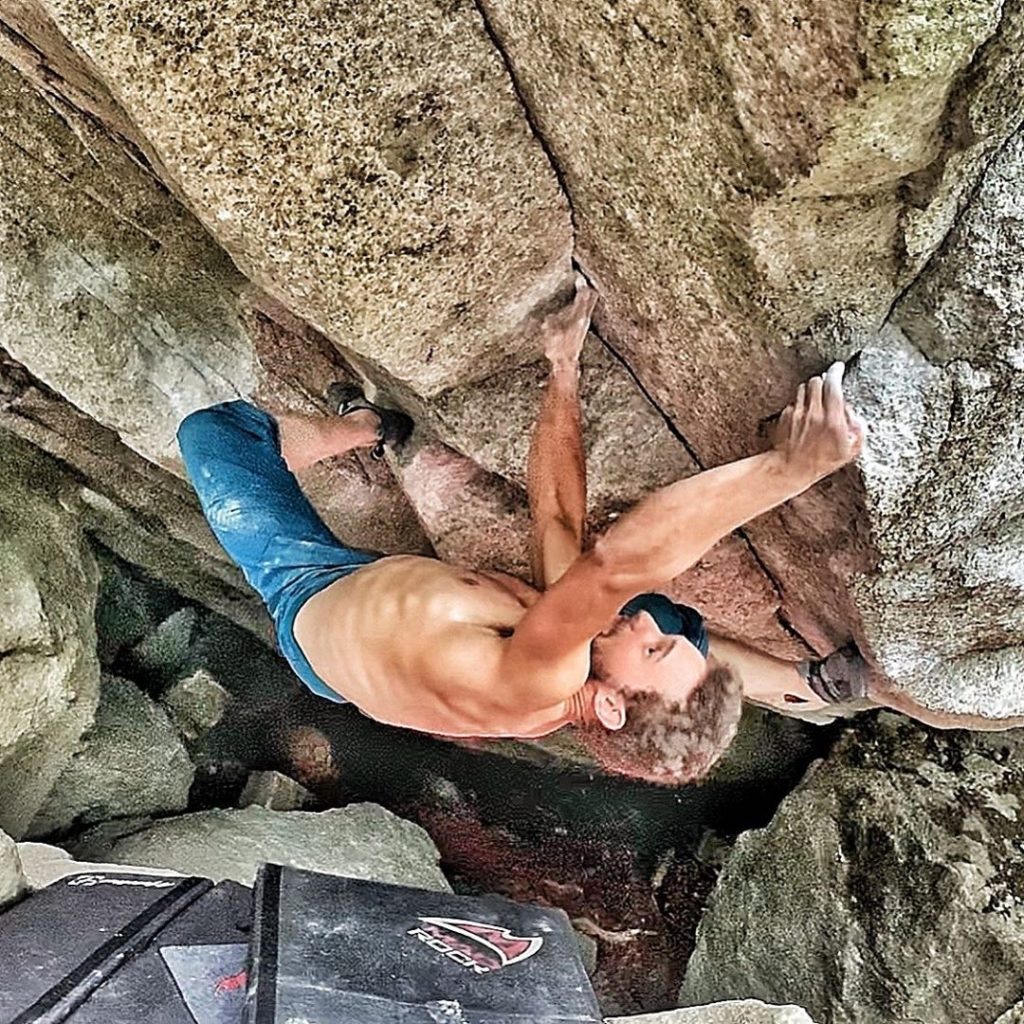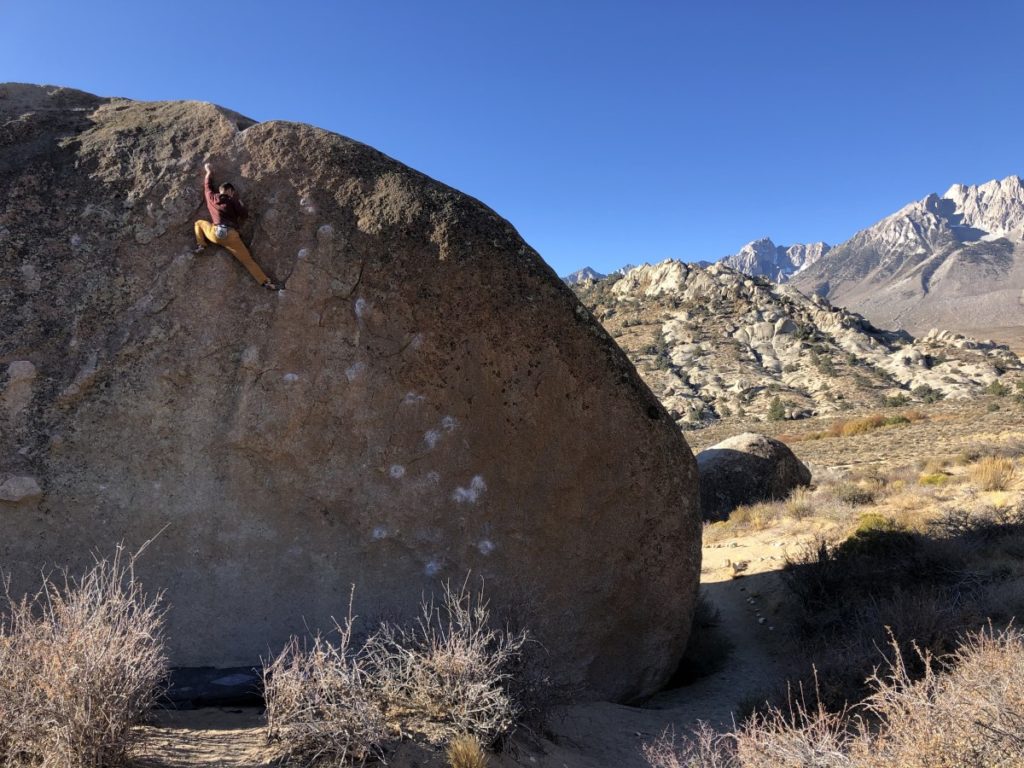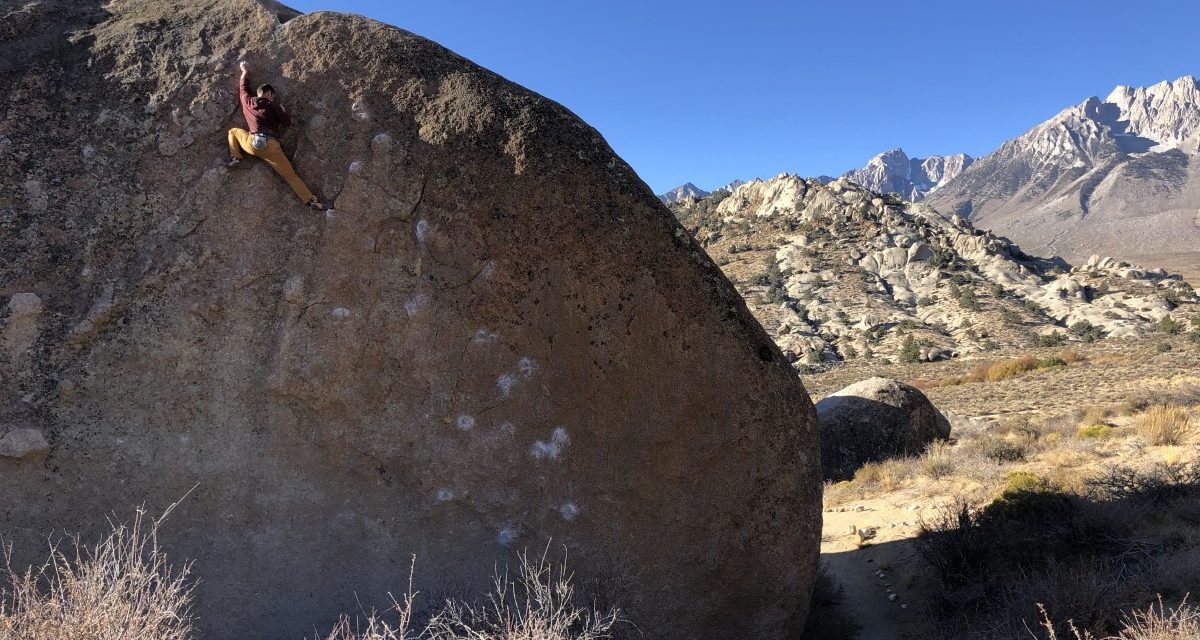I know, I know. Another article about warming up? Yes, deal with it. Give me a chance to surprise you with a potentially fresh perspective. We all know that a good warm-up is essential for climbing our best and our hardest, but I’d wager that not many climbers are getting the biggest bang for their warm-up buck. You may or may not be surprised to hear that as your levels of performance increase, so too must the proficiency of your warm-up. I had an experience once where I failed to repeat a boulder problem that I had initially flashed, and had climbed at least two more times afterwards. Needless to say, I was shocked. What happened? The fault lay in my warm-up that day. It wasn’t that I didn’t warm up, or even that I rushed it. I just missed one little thing: my left hand ring finger. What?! The move that caused me to fall relied on digging into a crystal with that particular finger just right, which my finger was too cold to do. That was one of my first moments of hyper-body-awareness, and it really opened my eyes to the incredible depth of this sport.
I like to talk about warm-ups in two parts: general and specific. When I watch other climbers warm up, what I tend to see is them spending more time than necessary on what I describe as the general warm-up, and virtually no time on the specific warm-up. How often do you go to the gym for a bouldering session, spend 20-30 minutes climbing fairly easy stuff, maybe making the last few problems about flash level, and moving right into falling over and over off the same problem? You probably don’t get hurt, don’t feel too crappy, and don’t give your warm-up a second thought. But have you maximized the effect of your warm-up? Highly unlikely.
When I talk about “maximizing the effect of your warm-up,” what I mean is: using the proper methods to optimize your physical and mental preparedness for a specific activity. Breaking that down, you can see that warming up is a process, not a single action. The process has three stages:
- Defining your purpose.
- Getting moving.
- Getting moving properly.

If you plan on contorting yourself and using tiny holds like this, you’re going to need to do more than some jumping jacks and a handful of V-easy climbs.
Defining Your Purpose
The key to maximizing your warm-up is first to understand what it is you’re warming up for. If you’re following a training program, you probably already have a goal for that session so this step is easy. Maybe you intend to project a specific climb, campus, practice onsighting, do some hangboard sets, etc. Decide what you’re going to do that day.
Once you know what your goal for the day is, take a second to think about it a little harder. Let’s say you’re going to project a specific boulder problem. Think about the nature of the problem. What’s the wall angle? The hold type? How many moves is it? Is it technical? Powerful? Is it a compression line? Is it crimpy?
Now that you’ve made yourself aware of your goal and its nature, you can start getting yourself ready to achieve it.
Getting Moving
This is what I call the general warm-up. All you need to do is get your body moving. If you’re anything like me, some days you’re all fired up and ready to hop on the wall, and some days you don’t even want to do a pushup–let alone climb a rock. Check in with yourself and gauge your initial level of preparedness. If you’re raring to go, then go. If you’re not, don’t. Do what you can conceive of doing and don’t force yourself to move faster than you feel able to. Some days I’ll start off by cruising some easy climbs, while other days I need to do some basic movement preparation like lunges and pullups. The important thing is to start where you can, not where you think you should, and go from there.
As a rule of thumb for myself, I like to make the following considerations during my general warm-up:
- Mobility – Am I as limber as normal? Do any specific movements cause me abnormal distress? Am I tight anywhere? I stretch and exaggerate my movements while on the wall to help limber up.
- Hands – Not all easy climbing is done on jugs. I vary my grip types as I’m able, getting my hands and forearms acclimated to various positions and productions of force.
- Shoulders – Can I lock off? Can I gaston? Iron cross? I get my shoulders moving as much as possible and use full ranges of motion.
- Downclimbing – I do a ton of downclimbing during the opening stages of my warm-up. It gets me moving in ways I normally don’t while climbing, and activates my muscles in eccentric patterns.
Once you feel like your body is ready for things to get a little more intense, it’s time to move on.
Getting Moving Properly
Enter the specific warm-up. Remind yourself of your goal and its nature, then take a second to check in with yourself again. Where are you now and where do you need to be before reaching your goal? If you’re going to hangboard, you’ll want to continue warming up your fingers, as well as make sure your shoulders and elbows feel good. If you’re going to project an especially powerful climb, you’ll want to focus on doing more powerful movements. Basically, mimic the demands of your goal at lower intensities.
The specific warm-up should generally take a bit longer than the general warm-up. For me, the opposite tends to be true on days where moving at all is difficult. It might take me a little longer to get started, but once I get there I’m pretty much good to go. Think of the specific warm-up as your “last chance.” You’re about to deliver a performance, so make sure you’re as ready as possible.
Make sure you use the specific warm-up as an opportunity to get your mental game ready as well. Powerful climbing requires a fierce mental state, whereas technical climbing requires more balance and awareness. Do you need to fight? Or do you need to be zen? If you’re about to do a highball, you may want to do a few other highballs first to prepare yourself for the feeling of climbing at that height. You get the idea.

When climbing in the Buttermilks, where the boulders are generally bigger than houses, I always include a few easy but heady highballs in my warm-up to prepare for the day.
Final Thoughts
Remember that this is a guide for maximizing your warm-up for peak performance, not a prescription for every warm-up you ever do. As such, there are some exceptions to this process of warming up that are worth mentioning. Say you’re just heading to the gym for a quick, chill boulder session with your buddies. You’re probably fine to skip the goal setting and the specific warm-up exercises and just get to climbing. Maybe you’re about to do an ARC session, in which case I highly doubt you even need to warm up at all, considering the extremely low-intensity nature of ARCing.
Warming up like this is work. It’s not particularly hard work, but it’s still work. If you’re not interested in doing work, then don’t. If you just want to climb and have fun without a specific goal or plan, then do whatever you want. If there’s no pressure inherent to your climbing session, don’t add pressure to your warm-up. Keep everything in perspective: do the work when you’re supposed to and just have fun when you have the chance.








